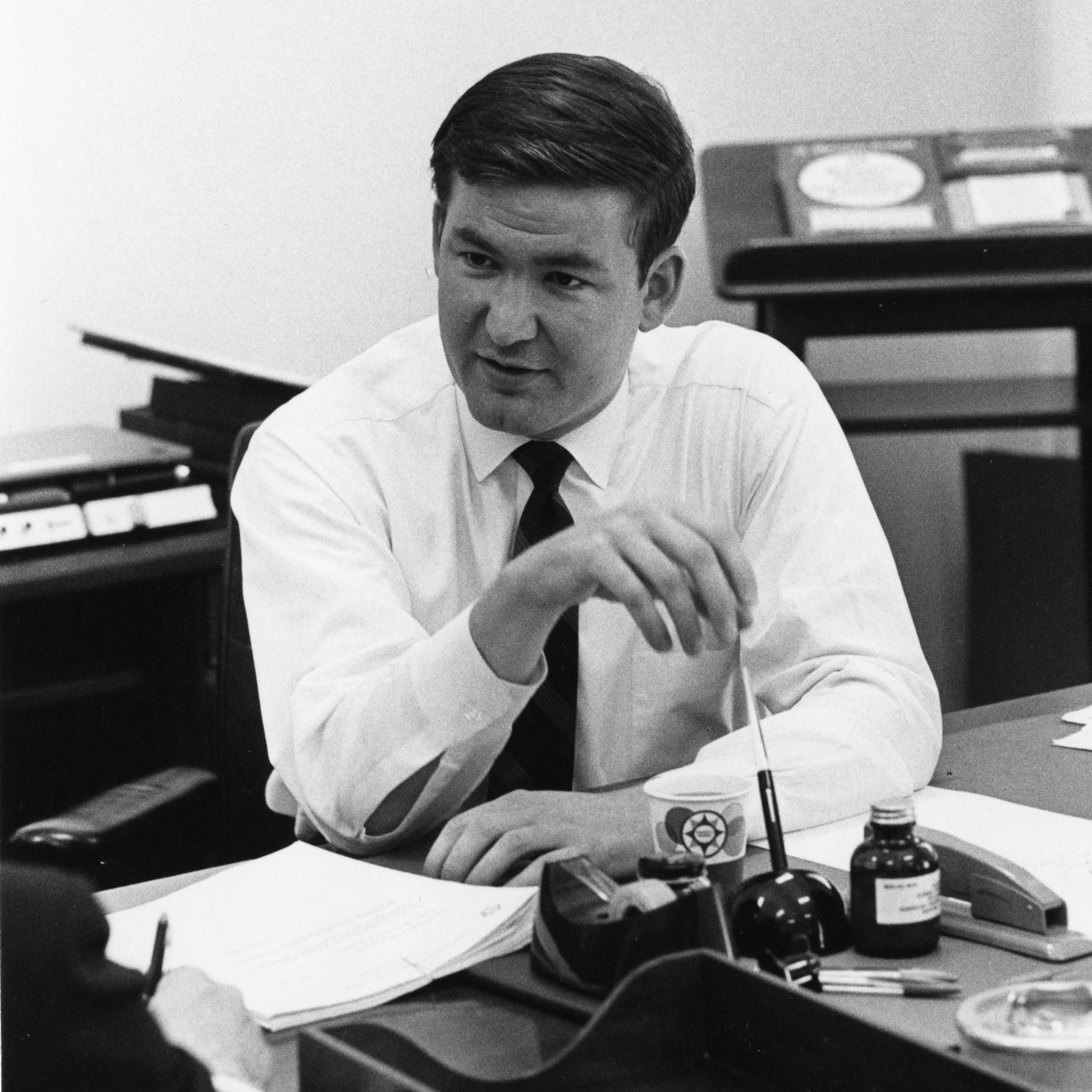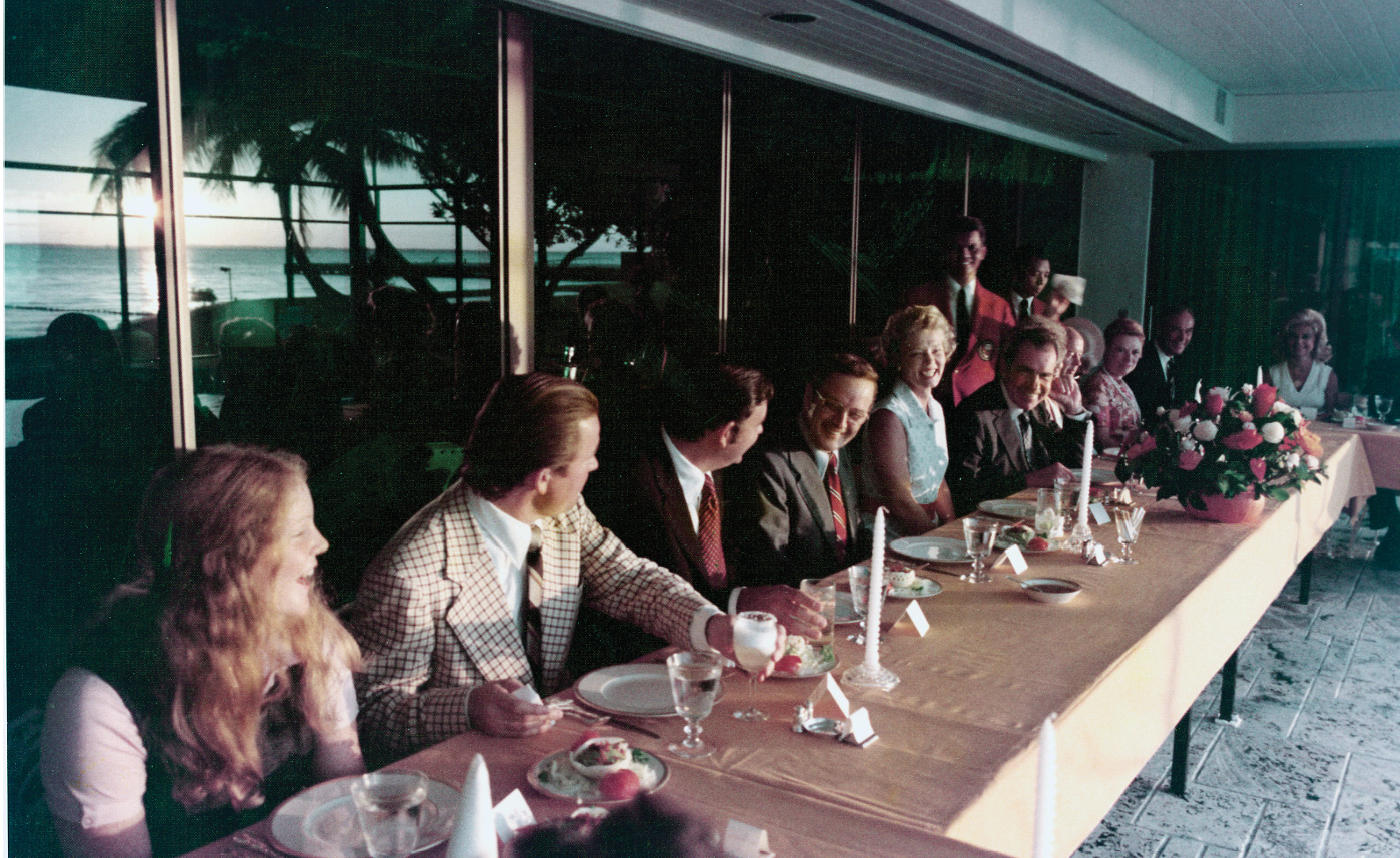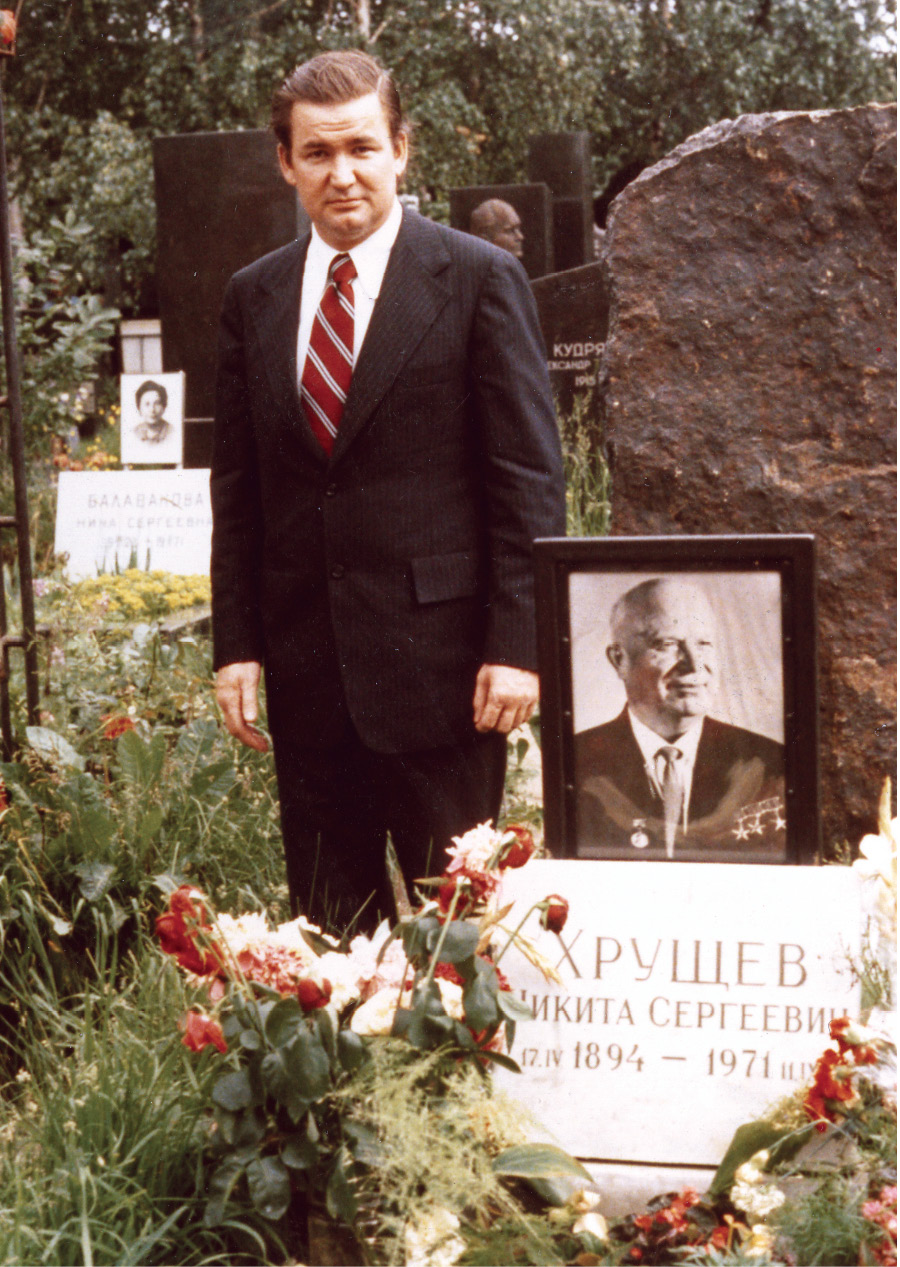

With wife Pat beside him, Richard Nixon is sworn in as President in 1969 by Chief Justice Earl Warren. Vice President Hubert Humphrey, whom Nixon defeated, is to his right. The President’s limousine was showered with debris on the ride back to the White House. (Courtesy of the Nixon Presidential Library)


President Nixon, with Ken Smith, me, and Lyndon K. (Mort) Allin (right), editor of the President’s Daily News Summary, which was on his desk every morning when he came into the Oval Office and which he read first. (Courtesy of the Nixon Presidential Library)


With John Ehrlichman, counsel and assistant to the President for Domestic Affairs, and Bob Haldeman, White House chief of staff.


Nixon research-and-writing staff of 1968 after the victory over Vice President Humphrey. Left to right: Alan Greenspan, me, Ray Price, Jeff Bell, Martin Anderson, Bill Gavin. (From the author’s collection)


With Nixon in the back of a small plane during the 1968 campaign. (Courtesy of the Nixon Presidential Library)


Speechwriter and special assistant to the President. (Courtesy of the Nixon Presidential Library)


First page of my Memorandum to the President urging an Agnew attack on the networks after they trashed his “Silent Majority” speech of November 3, 1969. “Pat! Let’s go! P. is all for it. H.” is Haldeman’s relay of Nixon’s order to me to proceed with writing and launching the attack of November 13. (From the author’s collection)


President Nixon meets his speechwriters in the Oval Office. From left: Ray Price, Lee Huebner, me, Bill Gavin, Jim Keogh (head of the writing team), and Bill Safire. Bob Haldeman is on the sofa behind. (Courtesy of the Nixon Presidential Library)


On Air Force One, working with fellow speechwriter—and future New York Times columnist for three decades—Bill Safire. (White House photo)


President Nixon’s three senior writers in his first term, with me on the left, Bill Safire, and Ray Price, right, in the White House Library. (Courtesy of the Nixon Presidential Library)


Pat Moynihan, counselor to the President for Urban Affairs, looks over new construction work in Washington with the President, who relished his intellect and wit. (Courtesy of the Nixon Presidential Library)


My Memorandum to the President that ignited the school busing battle in the White House. On it, Nixon scribbles his concern that U.S. courts are imposing a double standard. Directing that Ehrlichman send my memo on to Finch, Moynihan, and Mitchell, Nixon demands, “Why should we continue to kick the South and hypocritically ignore the same problem in the North?”


With Vice President Spiro T. Agnew and Bill Safire aboard Air Force Two during the congressional campaign of 1970, “The Seven Weeks War Against the Radical Liberals.” (White House photo)


Shelley outside the Oval Office, overlooking the Rose Garden, after being named receptionist to the President. (White House photo)


Chuck Colson, special counsel to the President, who chaired the “Attack Group” that met daily to target Democratic nominee George McGovern. (Courtesy of the Nixon Presidential Library)


Arthur Burns, counselor to the President and chairman of the Federal Reserve, who became disillusioned with his old friend, the President. (Courtesy of the Nixon Presidential Library)


Senator Barry Goldwater and President Nixon.


With Bryce Harlow, assistant to the President for Congressional Affairs in the Eisenhower and Nixon White Houses. (Charles Bonnay, Time, Inc.)


White House counsel John Dean, whose five days of testimony before the Watergate Committee put the scandal into the Oval Office. (Courtesy of the Nixon Presidential Library)


Len Garment, special counsel to the President, a liberal Democrat and adviser on the arts and civil rights. (Courtesy of the Nixon Presidential Library)


Ken Khachigian, longtime aide to President Nixon, with wife Meredith (center), President Nixon, and their friend Ann Walsh, in the Oval Office. (White House photo)


Former Texas governor John B. Connally, a Democrat and self-described “Big Cowboy,” whom Nixon recruited for Secretary of the Treasury and wanted to succeed him as President. (Courtesy of the Nixon Presidential Library)


President Nixon with his former law partner, and the man he called his “heavyweight,” Attorney General John Mitchell. (Courtesy of the Nixon Presidential Library)


The President and First Lady with Shelley and me at the door of the Shrine of the Most Blessed Sacrament Church after our wedding, May 8, 1971. (Courtesy of the Nixon Presidential Library)


President Nixon and the First Lady on the Great Wall on his historic trip to Mao’s China in February 1972. That is me, visible to the right of Pat Nixon, in the Russian shapka. (White House photo)


Henry Kissinger in the White House briefing room on October 26, 1972, declaring “Peace is at hand” in the Vietnam War. The “Christmas Bombing” of Hanoi began two months later. (Courtesy of the Nixon Presidential Library)


The “Attack Group” that met daily at 9:15 a.m. in Chuck Colson’s office to plot strikes on Democratic candidate George McGovern. Back to camera, coatless: Chuck Colson. At table, from left: me, Ed Failor and Al Abrahams of the RNC; Ken Clawson (in vest) and Wally Johnson of the White House staff. Near the door, from left: David Keene of Vice President Agnew’s office, Ken Khachigian, Ed Harper of the Domestic Council, Art Amolsch of CRP. Far right: Ken Wilck of the RNC. (White House photo)


Nixon in the Roosevelt Room, May 1973, ten days after the resignations of Bob Haldeman and John Erhlichman had decapitated the White House senior staff, telling us that General Al Haig, left of the fireplace, is the new chief of staff. I am on the couch, closest to Haig. (White House photo)


Elliot Richardson, former secretary of HEW and Defense, being sworn in as attorney general in May 1973. Richardson would resign rather than fire special prosecutor Archibald Cox in the “Saturday Night Massacre” that led to resolutions of impeachment against the President in the U.S. House of Representatives. (White House photo)


Handwritten note from the President, May 23, 1973, thanking me for playing “devil’s advocate” in preparing the Watergate white paper released a day earlier. (From the author’s collection)


Handwritten note from President Nixon after his “Duel in the Sun” press conference at the Western White House in August 1973, thanking me for having prepared his briefing book. (From the author’s collection)


Testifying before the Watergate Committee chaired by Senator Sam Ervin for five hours on September 26, 1973, with my brother Jim behind me. (Bettmann/Getty Images)


Dinner at the President’s house on Key Biscayne after I testified before the Watergate Committee and at the time of the Agnew resignation and Yom Kippur War. From left: Al Haig’s daughter Barbara, me, Ron Ziegler, Fred Buzhardt, Pat Haig, President Nixon, Jane Lucke, Bryce Harlow, Rose Woods, Al Haig, and Shelley. (White House photo)


The Goldwater dinner party at the White House, December 13, 1973, where the senator felt President Nixon was “cracking” and “crumbling.” Left to right: Barry Goldwater, Rose Woods, me, Julie Nixon Eisenhower, David Eisenhower, Betty Harlow, the President, Mary Brooks of the Mint, Ray Price, Shelley, Bryce Harlow, and First Lady Pat Nixon. (Courtesy of the Nixon Presidential Library)


Congratulating Gerald Ford on his confirmation as Vice President in December 1973, after the resignation of Spiro Agnew. I had urged Nixon to select Ford. To my left, partly obscured, is White House special counsel Richard Moore, who was crucial to the selection of William Rehnquist for the Supreme Court. (White House photo)


Denied burial in the Kremlin Wall, Nikita Khrushchev was interred in Novodevichy Cemetery in Moscow, where I visited his grave during President Nixon’s final summit in July 1974. (From the author’s collection)


With Press Secretary Ron Ziegler in front of the dock and Premier Leonid Brezhnev’s twin yachts at Yalta in the Crimea, before the “Boating Party” on the Black Sea. (White House Photo)


With President Gerald Ford, right after he was sworn in following Nixon’s resignation on August 9, 1974. (White House photo)


President Nixon, departing the White House lawn for the last time aboard Army One for Andrews Air Force Base and exile in San Clemente. (Courtesy of the Nixon Presidential Library)


With Shelley and Richard Nixon, 1987. The inscription reads: “To Pat and Shelley, with best wishes from the one who brought them together.” (Nydia Leiby)